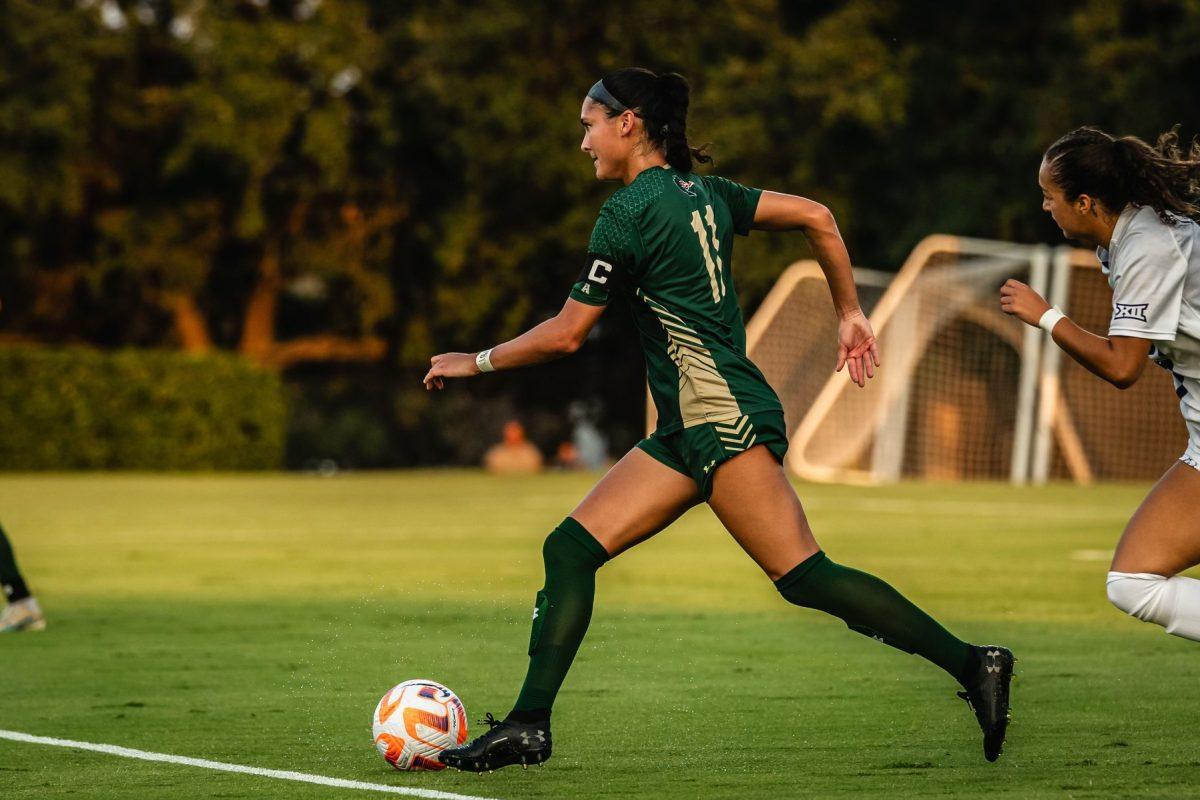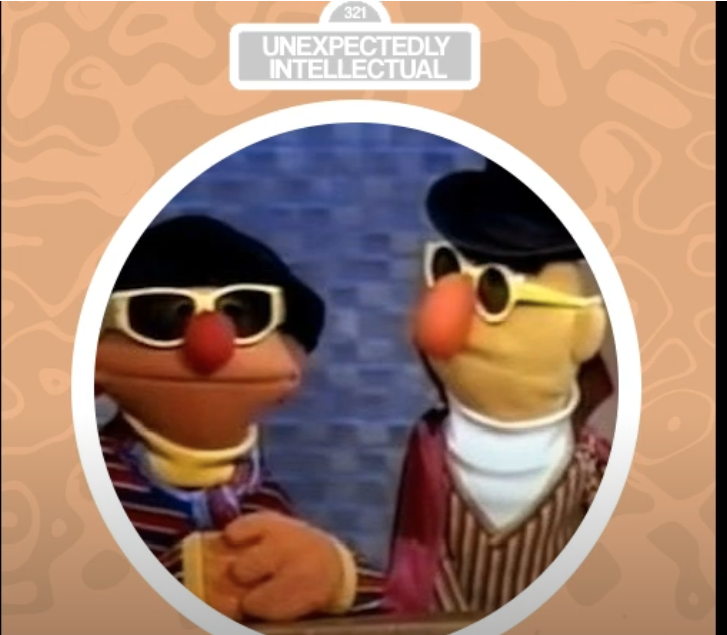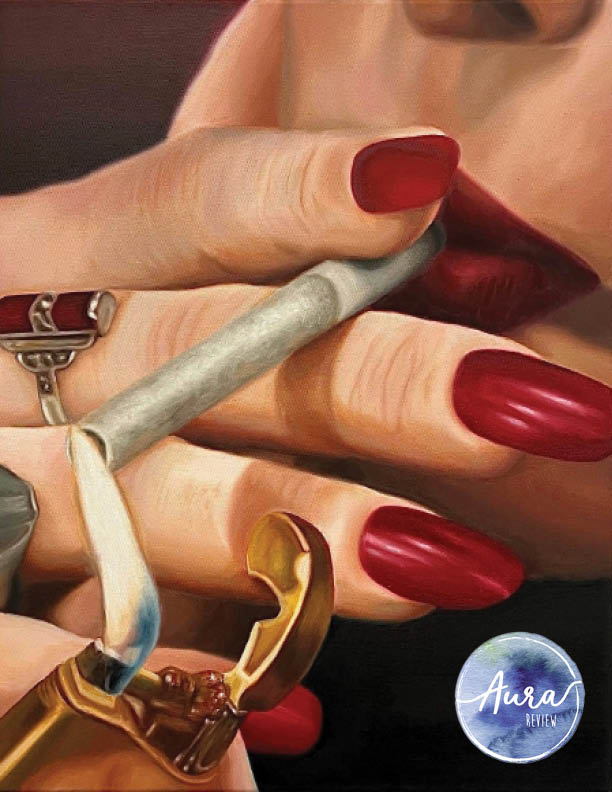 Ashley Frith, Editor-in-Chief, takes readers behind-the-scenes of the making of Volume 48 Issue No. 1 of Aura Literary Arts Magazine…
Ashley Frith, Editor-in-Chief, takes readers behind-the-scenes of the making of Volume 48 Issue No. 1 of Aura Literary Arts Magazine…
- How do you enter the process of making the magazine? (i.e. with a loose idea of what you want it to be? letting it freely take shape with the art/writing submissions?)
- Pretty much everything I do is chaotically organized. I’m a very adaptive, “thinking on the fly” type of artist, I would say, so everything I start is based on a loose idea. I didn’t know the order of pieces or theme for the magazine— the editors helped a lot with that— so we just tried to mold a cohesive flow of the accepted pieces into a theme using various features such as shapes, colors, and topics. It’s just a very loose process based largely upon adaptation.
- Can you describe how you feel going into that process? Is it daunting, exciting?
- I definitely wasn’t [nervous] for the magazine, mostly because I feel like I delegated really well, with editors helping to format and design it. Once I got my hands on it, it was easier because I didn’t have to start with a blank slate. Even before that, though, I was super excited by just looking at the submissions (especially the art). As soon as we saw the cover art, I knew it was going to be incredible.
- If you had to guess, around how many total hours went into the making of this magazine?
- It’s difficult to estimate how many hours total went into it, but including submission reviewing and meetings, around 40-50 hours have gone into it so far with about 10-15 hours to add over the next week.
- Is there a piece of art or writing that stood out to you the most in this edition? If so, what stood out about it?
- Art-wise, Hands speaks to me. I love that piece so much; it’s just so beautiful, it’s like a cotton candy sky. Writing-wise, “Jar of Lights” was really good. That was the top prose. The opening poem, “Petals on the Floor,” is also very captivating.
- Are there any features that you particularly value in a submission to Aura?
- I really like when writers use interesting formats because it pulls in an element of art and design to the poetry and prose itself. For the actual writing, I really enjoy a lot of imagery. In art, I look for technical excellence, pushing the boundaries of the medium, and a clear meaning or evocation of emotion.
- You decided to include a section for staff submissions in this edition. What thoughts led to this decision?
- So, when I originally joined Aura, it was upon invitation from the previous EIC after I submitted an art piece of my own. I learned after joining that I couldn’t be published in the magazine anymore because I was on the staff. When I became EIC, I knew that I wanted to be able to represent the staff as well because most—if not all—of the staff are talented creators. It makes sense that they would have their own work, and it’s easy for that to get pushed to the wayside when reviewing all of these other submissions. I just really want to showcase the staff’s art because they deserve a chance to be published as well.
- What’s one word you would use to describe your staff that worked on the magazine with you?
- Dedicated.
- What’s the most valuable thing that you think readers should take away from this edition of Aura?
- It’s so easy to get hung up in in the small things of everyday life. We want readers of this issue to immerse themselves in the art and the human experiences that are translated through it. In doing so, we hope that they are also able to ruminate in their own experiences.
- What led to your decision to apply for your role as Aura’s EIC?
- Truth hour: I was pressured into it. I didn’t really have the confidence going into it. I knew I could do the job going in, but I wasn’t sure that I would be the best person to lead. I worked in multiple facets to prepare myself for the job going in, but I think what truly made me comfortable with the role was becoming good friends with the staff.
- What’s the event/project/task that you have enjoyed the most so far?
- The layout meeting was really fun! I loved the brunch. I loved how it went. We all really bonded, and it was great to get together and hammer out the magazine. After months of preparation, it was like it clicked for a lot of the staff to see the culmination of all the work in the layout of the magazine coming together.
- Is there a particular piece of advice that has been the most helpful to you as EIC?
- Essentially, I have strong perfectionist tendencies, and the best advice was from my therapist in helping me understand to not give up or be so hard on myself if things don’t go perfectly. I have learned how to set a high standard for myself, yet make room for error.
- What has been the greatest challenge you’ve faced coming into the launch of your first edition as EIC?
- I guess the biggest hang-up we had was keeping everyone on track in submission reviewing so there wasn’t too much scrambling towards the end.
- Was there a lesson you learned from this challenge, or any other lessons you’ve learned in this process?
- Communication and delegation.
- What is one skill you wish that you learned before becoming EIC?
- I wish that I had more skills with interpersonal relationships in the regard of solving issues that are brought to me. I have learned how to better guide people towards a solution in the sense of directing them to the person or department that is better suited to handle the issue.
- How would you describe your role as EIC in five words?
- Creativity, organization, relationships, resilience, and determination.
Story continues below advertisement





































